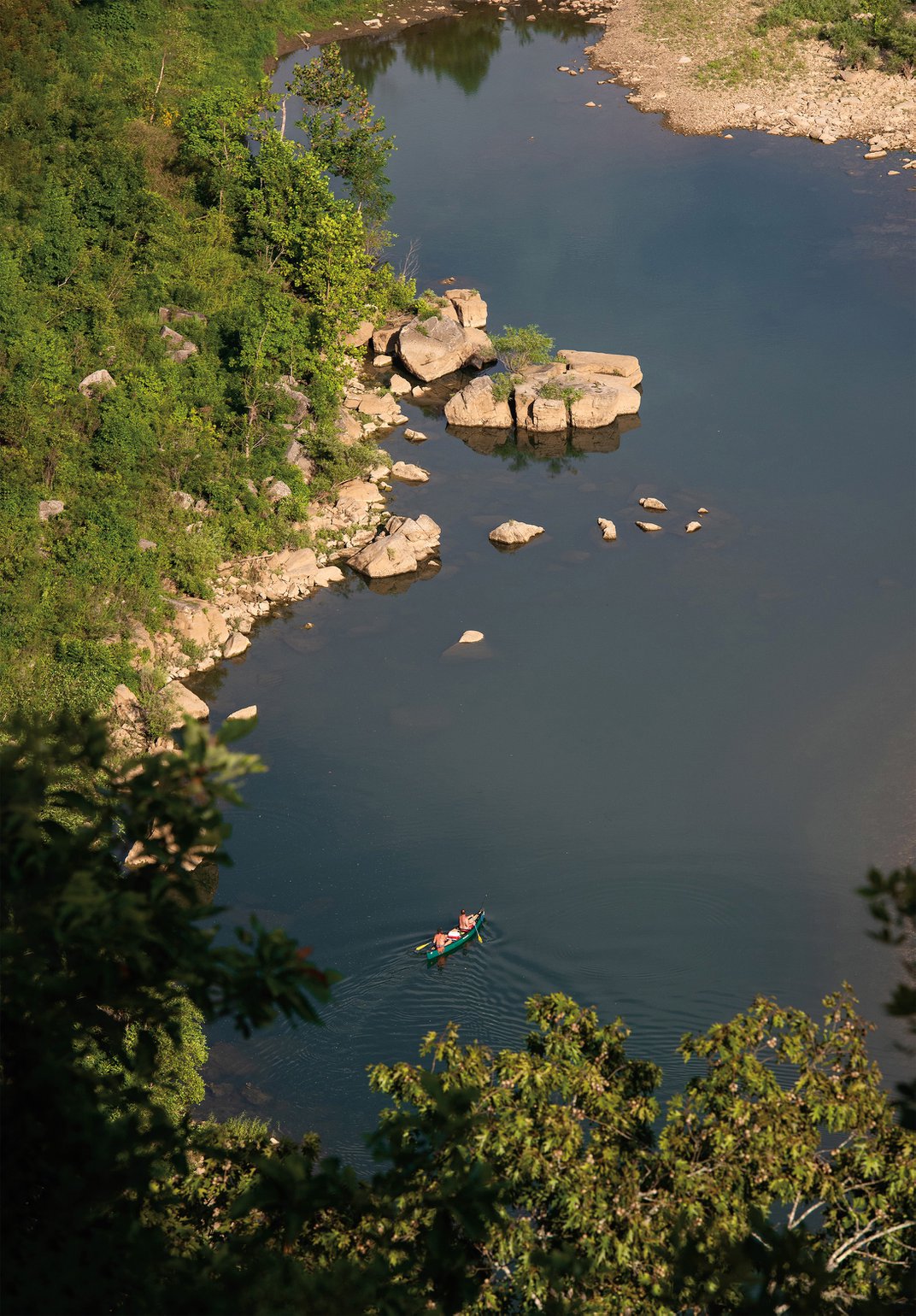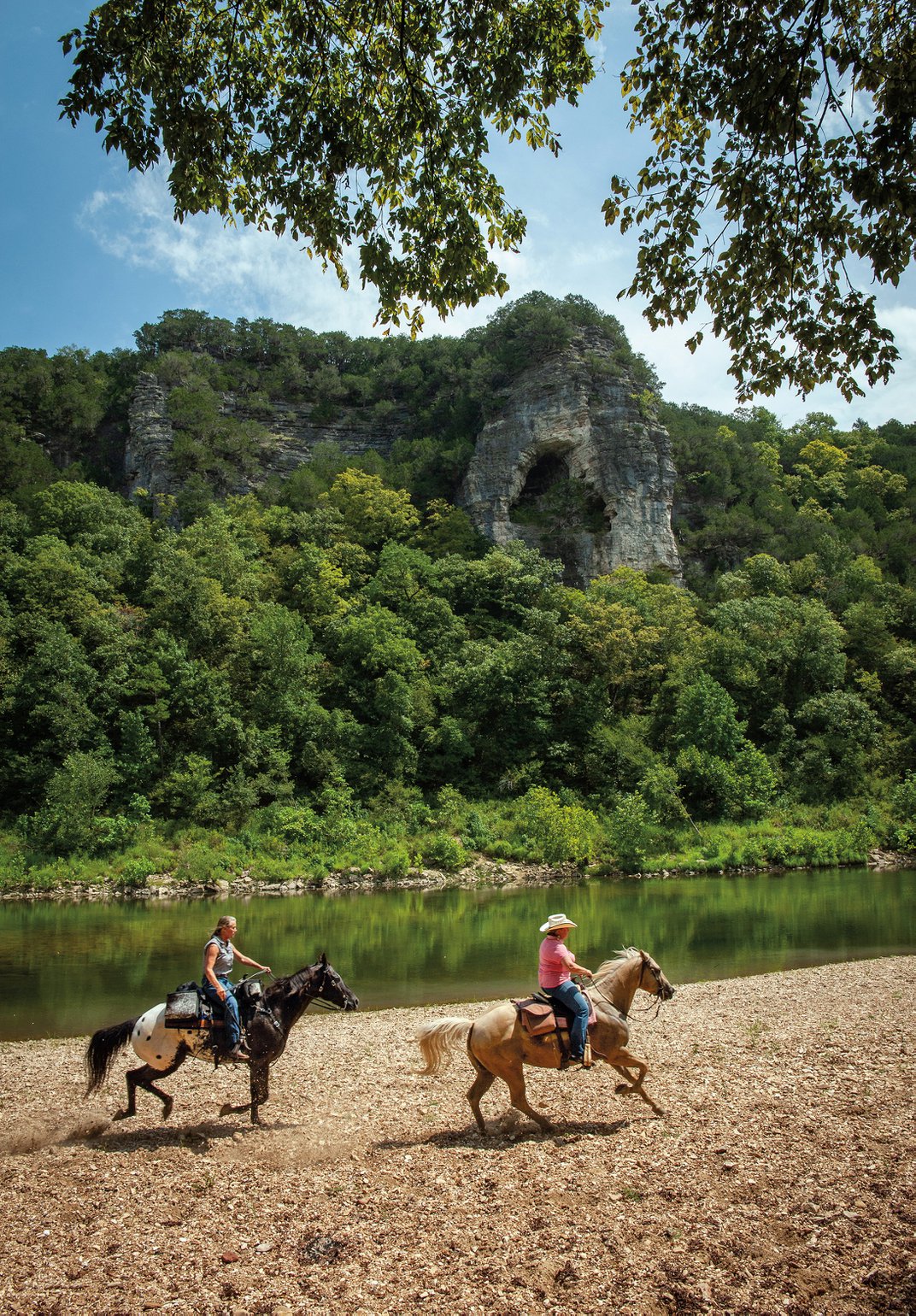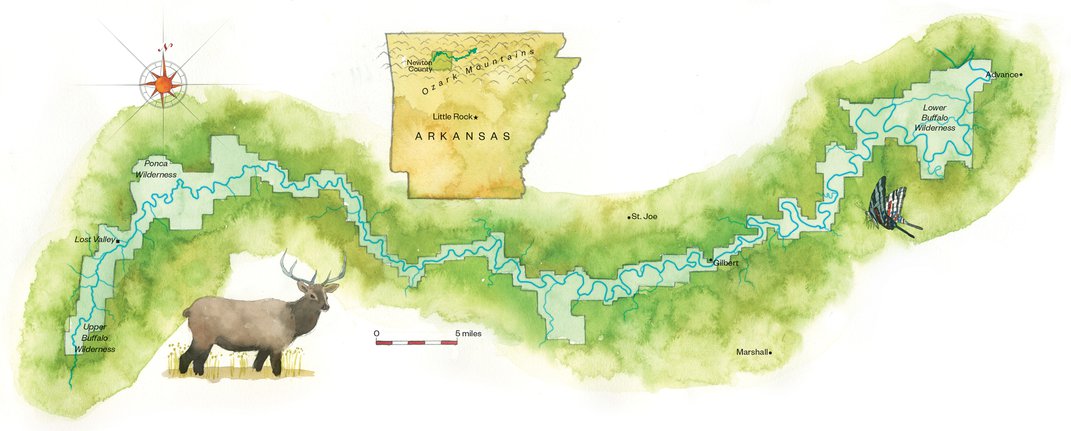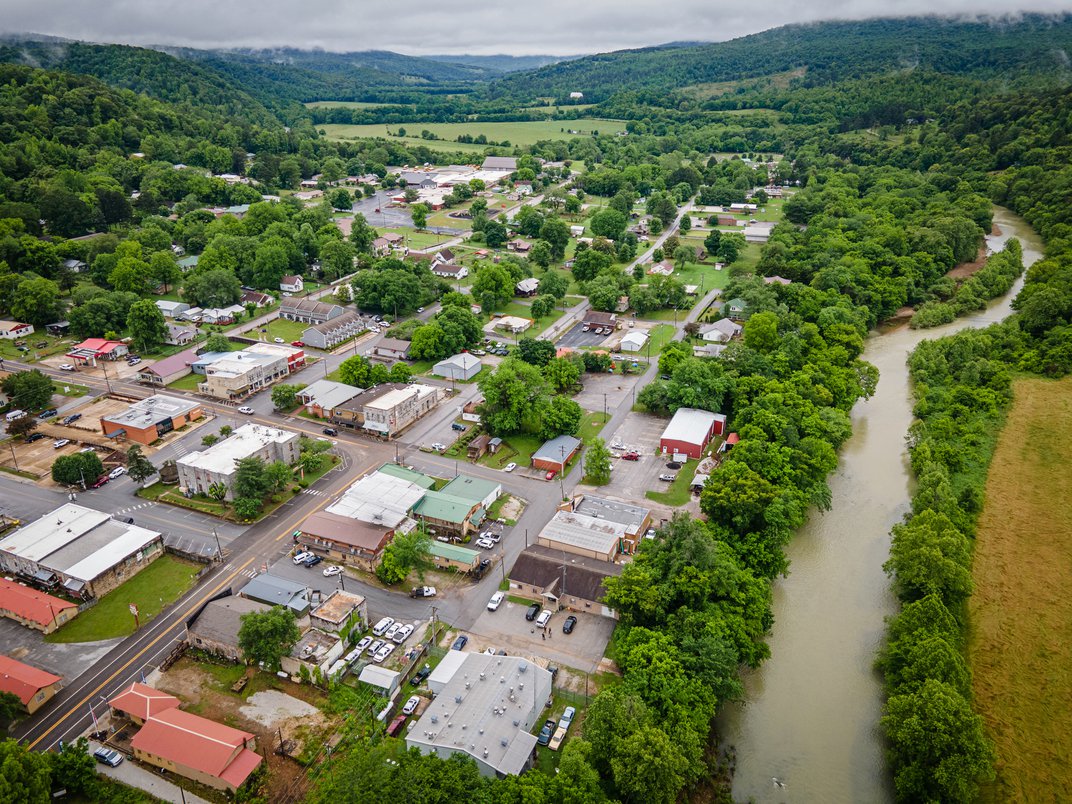If smoothed out flat, the rough mountainous terrain of Newton County, Arkansas, would prove “bigger’n the whole state of Texas,” a local resident once proclaimed to a folklorist. That may be an exaggeration, but the wrinkles of the topography have certainly kept this corner of the Ozarks quiet. Fewer than 8,000 people live scattered across Newton County’s 820 square miles. The place is mostly known for a waterway. Near the county’s western border, a trickling stream grows into the Buffalo River—the first national river in the United States, a distinction it earned 50 years ago.
For a long time Arkansans couldn’t agree on what the river should be used for, and some even fought over it. In the 1940s, with the local timber felled and the zinc and lead operations floundering, state tourism officials started promoting Newton County as a wilderness destination. The county was home to nearly half of the Buffalo River watershed, and outdoors enthusiasts considered the mountain stream one of the finest in the region, if not the country; it was a rare, free-flowing waterway, perfect for rafting or canoeing. Some local leaders wanted to turn the watershed into a national park. Others wanted to dam the river, which could provide hydroelectric power and form the kind of placid lake that had spurred the development of lodges, restaurants and retirement homes elsewhere in the Ozarks.
A perfect day for paddling near St. Joe, Arkansas. Rory Doyle
Horseback riders gallop near the confluence of the Buffalo and White rivers. Rory Doyle
The Buffalo River runs from west to east, from its headwaters in the Boston Mountains in the Ozark Plateau. It flows 153 miles through four Arkansas counties and merges with the White River just south of the Missouri border. Illustrated map by Steve Stankiewicz
The Little Buffalo River tributary flows alongside the town of Jasper. Rory Doyle
For their part, many…
Click Here to Read the Full Original Article at Travel | smithsonianmag.com…
